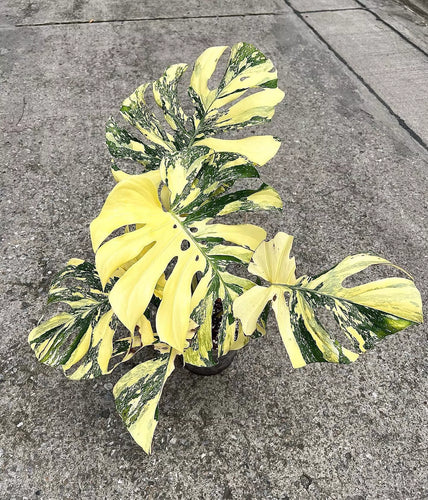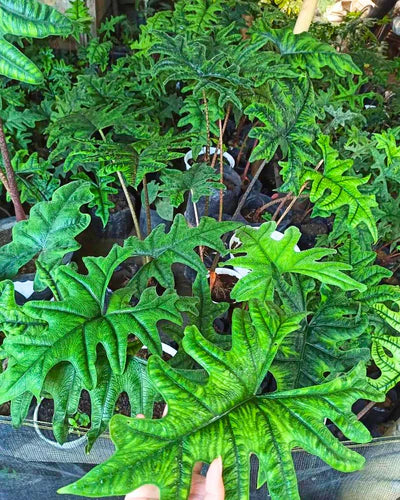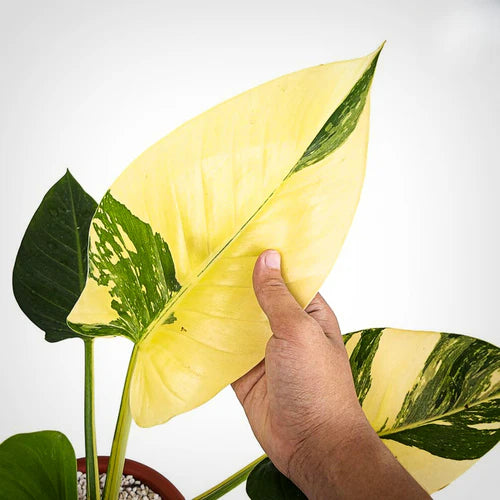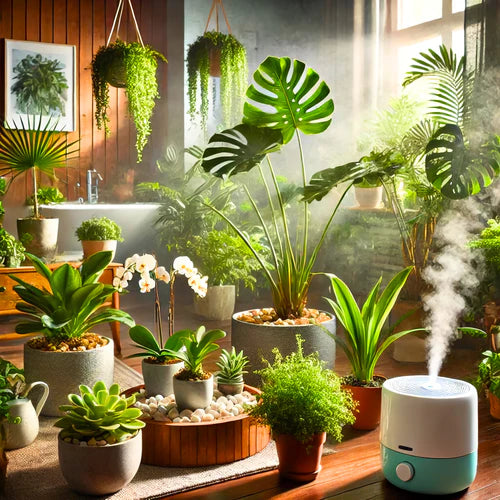Ultimate Guide for Alocasia Black Velvet Care
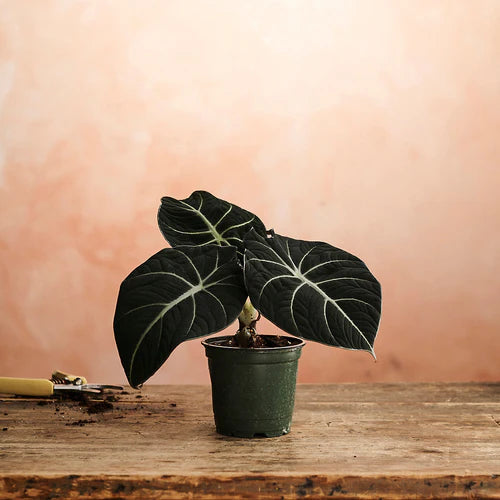
Alocasia Black Velvet Care Guide
The Alocasia Black Velvet is a marvel in the plant world, sporting luxurious black leaves with striking silver veins. Often termed the "jewel of houseplants," its dark, velvety appearance has captured the hearts of plant enthusiasts globally. But what does it take to care for this exotic beauty? This comprehensive guide will cover everything you need to know.
Table of Contents
- Introduction: The Enigmatic Alocasia Black Velvet
- A Brief Overview: Understanding Alocasia Black Velvet
- Light Requirements: Let There Be Light, but Not Too Much
- Watering: The Golden Balance
- Humidity: The Invisible Companion
- Soil Mix: Lay the Right Foundation
- Fertilizing: The Growth Catalyst
- Pruning: A Little Off the Top
- Common Pests: Small Creatures, Big Problems
- Propagation: Spreading the Love
- Expert Tips: Maximize Your Success
- FAQs
- Conclusion: Your Alocasia Black Velvet Journey
Introduction: The Hypnotizing Alocasia Black Velvet
The Alocasia Black Velvet is not just another pretty plant; it's a conversation starter, an eye-catcher, and quite the diva when it comes to care requirements. Known for its deep black leaves with prominent silver venation, it creates an unmatched visual spectacle that capture the hearts of enthusiasts and goth plant lovers.
A Brief Overview: Understanding Alocasia Black Velvet
Classification and Native Region
Alocasia Black Velvet belongs to the Araceae family, native to the tropical and subtropical regions of Asia. Its dark-colored leaves are not just for show; they've evolved as an adaptation to lower light levels in its natural habitat.
The Velvet Allure
The velvety texture of its leaves makes this plant extraordinarily attractive. But don't let its delicate appearance fool you; this plant has specific care needs that demand your attention.
Black Velvet Light Requirements:
Ideal Light Conditions
Indirect sunlight is what the Alocasia Black Velvet craves. Too much light can bleach its beautiful leaves, while insufficient light can stunt its growth. If you're unsure about your lighting conditions, investing in a light meter can offer precise measurements.
Supplement with Grow Lights
During winter or in low-light environments, supplementing natural light with grow lights can help maintain its lush appearance.
Watering your Black Velvet:
How Much is Too Much?
Overwatering is a common mistake. The soil should be kept moderately moist but never waterlogged. A moisture meter can help you maintain the right balance.
Quality of Water
Filtered or rainwater is generally best. Avoid water with high mineral content, as this can lead to salt buildup in the soil.
Best Humidity for Black Velvet:
Importance of Humidity
Alocasia Black Velvet prefers a humid environment. Dry air can lead to crispy leaf edges. A humidifier can be a worthwhile investment for maintaining ideal humidity levels.
DIY Humidity Hacks
Misting the leaves or placing the plant on a tray filled with pebbles and water are other ways to increase humidity.
Best Black Velvet Soil Mix:
Ideal Soil Conditions
Well-draining soil is crucial. A mix of potting soil, perlite, and organic compost works well. For even better drainage and aeration, consider adding Perlite.
Fertilizing Your Alocasia: The Growth Catalyst
Type of Fertilizer
A balanced, water-soluble fertilizer is generally recommended. Alternatively, slow-release fertilizer granules can be mixed into the soil for long-term nourishment.
When and How to Fertilize
Fertilize every 4-6 weeks during the growing season. Always water the plant before applying fertilizer to prevent root burn.
Pruning: A Little Off the Top
Why Pruning is Necessary
Pruning isn't just about making your plant look good; it's about helping it grow healthier. Removing dead or yellow leaves and faded flowers can direct energy towards new growth.
The Right Tools for Pruning
When it comes to pruning your Alocasia Black Velvet, sharp scissors or pruning shears are your best friends. Make sure to sterilize the blades to prevent any potential spread of disease.
Common Pests: Small Creatures, Big Problems
The Usual Suspects
Mealybugs, spider mites, and aphids are common pests that can plague your Alocasia Black Velvet. A weekly inspection can help you catch these critters before they become a significant problem.
Treatment and Prevention
Organic options like Neem Oil or insecticidal soap can be effective. For more severe infestations, consider Bonide Systemic Houseplant Insect Control.
Propagation your Black Velvet:
Best Time to Propagate
The best time for propagation is during the repotting process, usually in the spring.
Methods of Propagation
The Alocasia Black Velvet can be propagated through division. Gently separate the roots and ensure that each division has at least one healthy leaf and root.
Expert Tips: Maximize Your Success
The Importance of Drainage
Good drainage is crucial to prevent root rot. Make sure your pot has drainage holes at the bottom.
Leverage Worm Castings
Worm castings are an excellent organic supplement for your plant, providing a range of essential nutrients and helping to enrich the soil.
FAQ's about the Alocasia Black Velvet:
Alocasia Black Velvet Corms
Corms are the underground stem structures that store nutrients for the plant. It's from these corms that new leaves and roots develop. When propagating through division, each section should have a part of the corm.
Are Alocasia Black Velvet Hard to Care For?
Contrary to what one might think, Alocasia Black Velvet isn't particularly difficult to care for if you understand its basic needs. However, it is less forgiving than some other houseplants when it comes to neglect. So, regular monitoring is essential.
How Do You Take Care of Black Velvet Alocasia?
As we've covered, key elements include proper lighting, watering, and nutrients. Tools like a moisture meter or light meter can take the guesswork out of plant care.
Is Alocasia Black Velvet Rare?
While not extremely rare, the Alocasia Black Velvet is less commonly found than other varieties. Its unique appearance makes it highly sought after, contributing to its higher cost.
What is Interesting About Alocasia Black Velvet?
Its velvety leaves and intricate veining make it a fascinating plant to own. Its aesthetic value adds a touch of luxury to any space, making it a popular choice for interior decor.
Why Are Alocasia So Expensive?
The cost is often a reflection of the plant's rarity and demand. High-quality soil, specific light requirements, and pest management also add to the maintenance cost, making it a premium choice for many plant enthusiasts.
Conclusion: Your Velvet Queen Awaits
Taking care of an Alocasia Black Velvet is like nurturing a piece of living art. From its unique, velvety leaves to its specific care requirements, this plant is both a challenge and a reward. Whether you're a seasoned plant owner or a newbie looking to venture into exotic plants, the Alocasia Black Velvet offers an experience like no other. With the right care, tools like slow-release fertilizer and a quality humidifier, and vigilant monitoring, your Velvet Queen will not just survive but thrive.
By incorporating these elements, not only will you have a happier, healthier plant, but you'll also become a more attentive and knowledgeable plant parent. After all, the best caretakers are always learning, adapting, and growing—much like the Alocasia Black Velvet itself.
So why wait? Your journey with this magnificent plant begins now. Happy planting!


